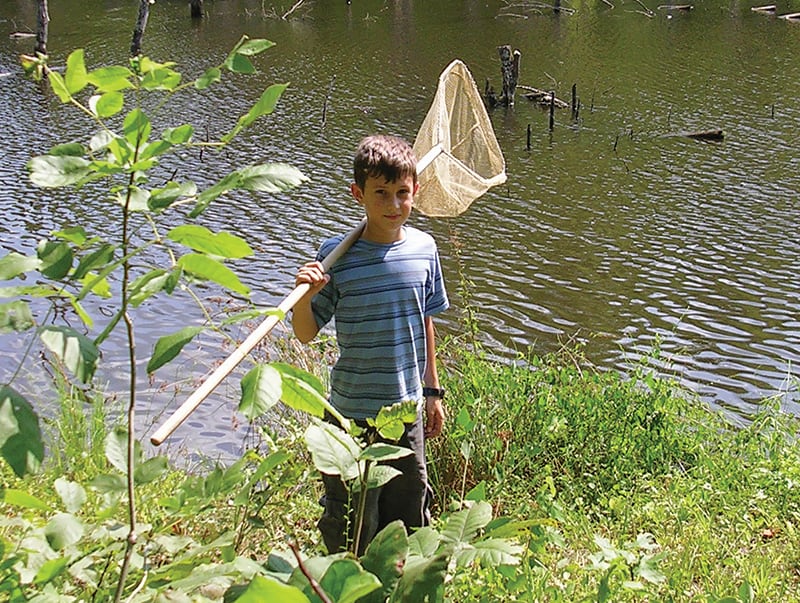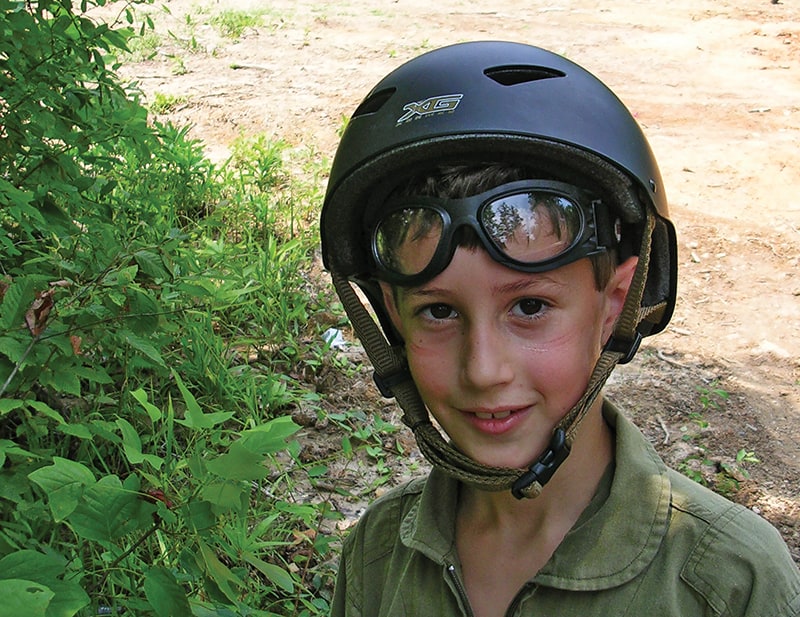The American Boy’s Handy Book
A Basic Guide For Transforming Rambunctious Boys Into Productive Men
What exactly is wrong with America today? Rivers of ink have been spilt investigating that one simple question. The basic conundrum of what brought us as a nation from an unprecedented position of prestige and power to our current sordid state has vexed our generation. However, I think I may have serendipitously tripped over the answer buried in an antiquated tome first published in 1882 and directed towards children. I think the United States of America simply ran out of men.
We didn’t lose them in battle or to some dire disease. We simply ceased their production. We had and still have all the raw material we need to regain our former glory; it seems we simply lack the means of refining our unwashed boys into the sorts of men we require to prevail in the global arena.
Daniel Carter Beard was born in 1850 and founded the group the Sons of Daniel Boone that went on to become the Boy Scouts of America. Beard was an artist and writer from a family of artists and grew up in rural New York with a passion for nature and the wilderness. He codified this enthusiasm into a series of articles written for St. Nicholas Magazine eventually compiled to form The American Boy’s Handy Book. D.C. Beard earned his Eagle Scout award at age 63. To read his book is to step back into another time.
The young boys described in Beard’s Handy Book so differ from our current variety as to seem a disparate species. The foreword states that prior to 1915 adults viewed boyhood as a state of near savagery. Boys were expected to have more in common with their dogs than with typical adults and society managed them accordingly. The sorts of rapscallion young boys depicted in The Adventures Of Huckleberry Finn were drawn from copious examples of the real thing rather than being the products of Mark Twain’s vivid imagination. In those days there was no Attention Deficit Hyperactivity Disorder in need of aggressive medical treatment. There was simply natural boyhood and the cure was the outdoors.

Here we see the American boy, ably represented by Wyatt Dabbs, in his natural habitat. The American Boy’s Handy
Book teaches a myriad of useful survival skills. Most modern readers will be shocked to find the resourcefulness,
initiative, and depth of reason expected of boys a century ago. A degree of comfort around unvarnished nature will
tend to put more modern problems in perspective. The capacity to survive and thrive in austere environments was an
expected skill of our young forebears of years past. Young children are capable of a great deal more than we typically
expect of them these days.
By Way of Example
The book begins with a fairly extensive discourse on the building of kites. The procurement of the materials required for their construction is reviewed as well. Young boys of this age did not run to Walmart when they needed such staples as glue. They cooked it up themselves from materials readily available on the typical rural farm. After the obligatory section describing how to design and build your kite, however, the next segment is devoted to weaponizing these designs.
Kites were not intended for pleasant afternoons at the park in D.C. Beard’s day. Kites were war machines designed and optimized solely for the destruction of enemy craft. Beard describes unarmed kite fighting as the sort wherein both kites might reasonably expect to survive to fight another day. Beard’s prose describes this as akin to jousting and a scant page is devoted to the basic rules governing this pursuit. The preponderance of the section, however, is used to describe the armed sort. Beard describes such engagements as “mortal combat wherein but one survives.”
Techniques for designing and procuring appropriately lethal kite-fighting tools are discussed in detail. Broken glass is the most common source and basic techniques for breaking bottles in search of adequately lethal shards are discussed. There is but a single line disclaimer regarding the potential for cuts and injury.
Designs for snow forts are explored, as are the rules for snowball combat. Little boys are feral in their native state and their natural warrior bent was nurtured in Beard’s day. Back then the inevitable tendency of all normal young men towards violence was recognized, accepted, and appropriately channeled.
Six different techniques for fishing are outlined in detail, as is the making of tackle from scratch. One particular sort of remote fishing is designed around the unconventional application of a percussion-fired pistol, apparently such handguns being readily available to 8-year-olds in Beard’s day. The general tone of the book is one of focusing a boy’s near limitless reserves of energy into tasks at once both creative and destructive. In so doing our nation indeed produced men.
The book is divided into seasons with tasks and pursuits designed to keep a young boy occupied regardless of the weather or climate. Techniques for building an aquarium to hold fish are included alongside instruction on how to trap animals, live off the land and practice taxidermy. The book teaches how to raise wild birds ranging in size from diminutive hummingbirds up through wrens and starlings all the way to large raptors like hawks and owls.
The ideal camping party is four, states Beard, and these four 8- to 10-year-olds are expected to build their own shelter, catch and cook their food, and thrive otherwise alone in the wilderness for a week or more at a time. Techniques for tying knots as well as building blowguns, fish spears, bird bolas, crossbows and boomerangs are included. Building hot air balloons for use celebrating Independence Day is suggested as is the construction of home made fireworks. Fuse is available in most any town, according to the book, as “miners need it to set off blasts.” If Roman Candles are available they should be cut open and the contents used to construct ever more impressive displays. The subordinate balls may be carried aloft via balloons or arranged on wires to spin when ignited.
The Boy’s Handy Book covers the manufacture of boats of a variety of sorts for most any application. Simple rafts are adequate for modest nautical pursuits. Model sailboats and how to sail them successfully consumes a fair number of pages. More advanced full-sized designs incorporate weatherproof cabins and hulls adequate for hard use. All of these projects are proposed to be within the capabilities of the typical group of off-duty boys equipped with a minimum of hand tools.
Improvised stoves compliment thatched huts or lean-to shelters sufficient to keep a group of boys both warm and dry in the wilderness. The construction of ice fishing shacks is discussed and an entire chapter is devoted to the construction of winged devices designed to accelerate young boys to dangerous velocities when employed alongside a proper set of homebuilt ice skates. The various and sundry ways in which a boy might potentially get hurt are beyond counting. Apparently young men were more robust than is the case today.
When the weather was wretched, boys of Beard’s day could entertain themselves by building kaleidoscopes, whirl-a-gigs, and trappings for puppet shows. A simple bit of cardboard could be configured to blow smoke rings. An entire chapter is devoted to the art of masquerade and the improvisation of theatrical costumes. The rudiments of electricity are discussed, as is the technique for igniting an open gas flame using your finger after dragging your feet across a rug to build up a static charge.
Beset By Melancholia
The American Boy’s Handy Book is a delightful read regardless of your station, comportment or gender. The pursuits described therein are thought provoking in their very nature and most fascinating when viewed through an historical lens. After having read the book, however, I found myself in the throes of a mighty gloom.
This is the fertile ground from which we bloomed. Those magnificent revolutionaries who threw the British out of North America were the products of a world wherein boys were expected to show initiative and resourcefulness to keep themselves alive in the wilderness as needed. Those old heroes who won World War II came up in a world much like the one described in the Handy Book. In today’s age it can be a legitimate accomplishment simply to cajole a young boy to take out the trash. The excessive energy expected to be channeled into creative manual pursuits a century ago is typically medicated into submission today.
As a nation we stand on the shoulders of giants whose exploits are related indirectly in delightful detail in the Boy’s Handy Book. In a world wherein more than 1/3 of kids less than 19 are either overweight or obese the coming tsunami of lifestyle induced diseases like diabetes promises to overwhelm us. However, the solution surrounds us all. We sit afloat a drinkable sea yet die parched for lack of initiative.
Our young people need to get outside and our adults need to chill out a little bit. I am a physician and I see kids who get hurt with some regularity. Bones heal and cuts can be stitched but the human animal remains remarkably robust. The capacity of the small human male to prevail in the face of adversity is grossly underestimated in today’s society. It seems to me the solution to most of our ills is simply to let him go outside to run around a bit more. The American Boy’s Handy Book will show you how to do it properly.
The American Boy’s Handy Book, Daniel C. Beard, ©2014, Tuttle Publishing, Airport Business Park, 364 Innovation Drive, North Clarendon, VT 05759, (800) 526-2778, www.tuttlepublishing.com, ISBN: 9-7808-0484-4031, Format: Paperback, 9×6 inches, Illustrations: b&w throughout, Pages: 320, Price: $12.95.






